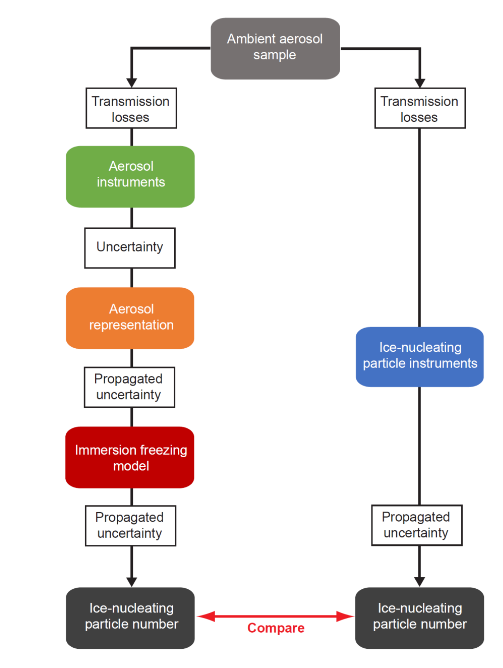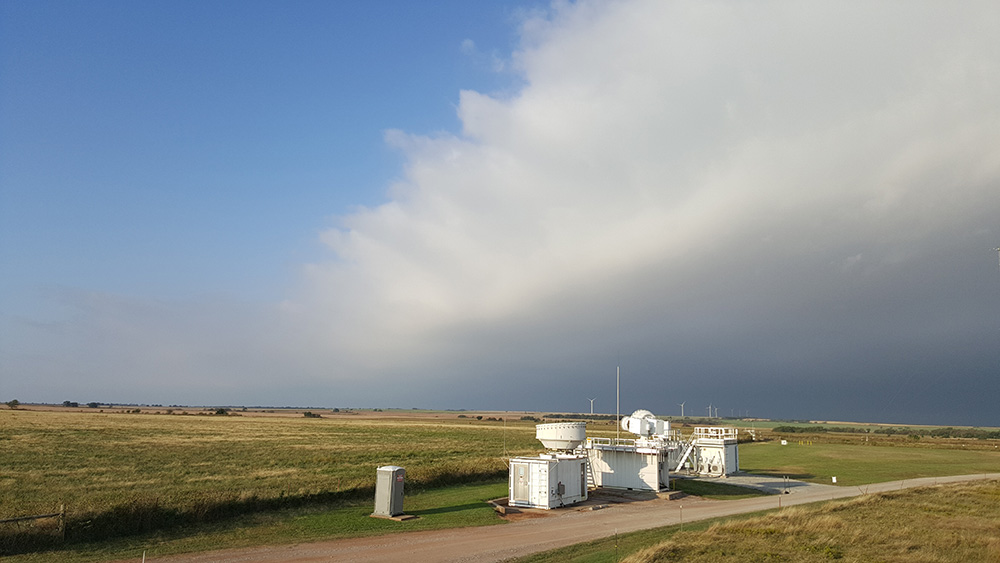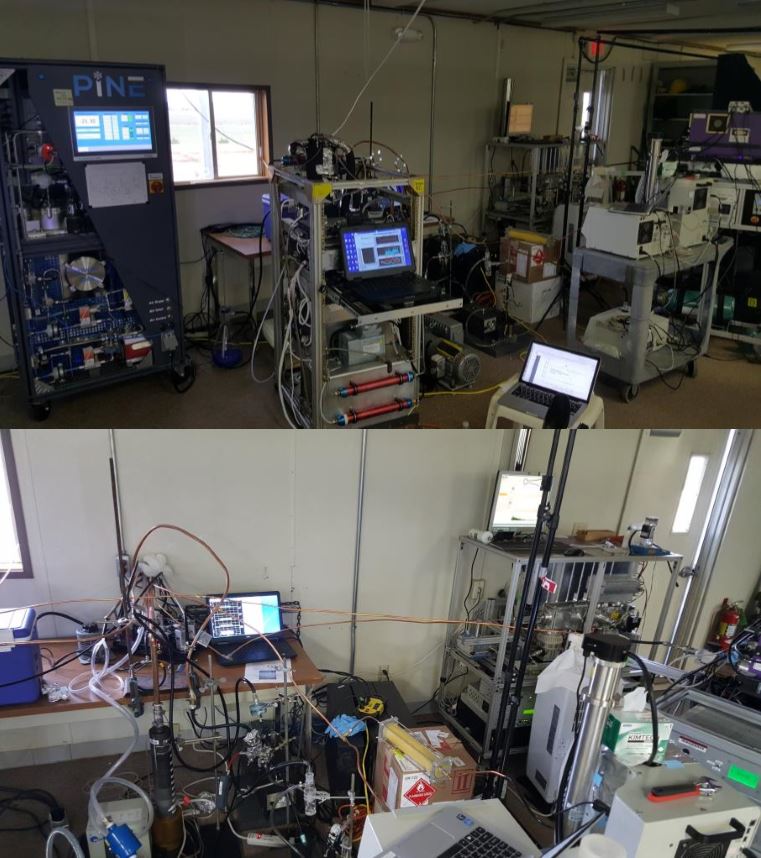First Results From Southern Great Plains Aerosol-Ice Formation Closure Study
Published: 27 September 2021
Findings could help improve modeling of atmospheric particles involved in ice crystal formation

The formation of ice crystals in the atmosphere has fascinated scientists for centuries. Since 1900, scientists have known that ice crystals can form at temperatures that are below freezing but higher than needed for freezing pure liquid water droplets, and that airborne dust particles are involved in this process. This implies that insoluble particles can initiate ice nucleation, though relatively few dust particles act as ice-nucleating particles (INPs).
Despite major advances in INP research during the last 20 years, scientists still seek to understand which atmospheric particle types initiate ice crystal formation so they can predict INP number concentration for a given temperature and humidity. This allows earth system modelers to better constrain the number of ice crystals in a cloud.
In October 2019, the Aerosol-Ice Formation Closure Pilot Study at the Atmospheric Radiation Measurement (ARM) user facility’s Southern Great Plains (SGP) atmospheric observatory addressed this issue by evaluating the predictive knowledge of INPs in an air mass for the first time using an exercise known as a “closure study.” Researchers characterized INPs by using state-of-the-art aerosol measurement instruments and laboratory techniques, then evaluated model parameterizations—simplified representations—against these rigorous data. The study brings “closure” to the problem if the measured and modeled values agree.
An early online release article published by the Bulletin of the American Meteorological Society (BAMS) describes this milestone study. Led by principal investigator Daniel Knopf of Stony Brook University, the co-authors represent U.S. Department of Energy (DOE) national laboratories, NASA, universities, foreign institutions, and an instrument company. ARM, DOE’s Atmospheric System Research (ASR), NASA, and the National Science Foundation supported this research.
Prediction of ice formation in clouds is difficult because several ice nucleation pathways lead to primary crystal formation. Aerosol particles also have a wide range of physical and chemical properties that affect ice nucleation activity. The process mostly occurs in mixed-phase clouds via immersion freezing initiated by INPs. In these clouds, supercooled water droplets—still liquid below water’s freezing point—and ice crystals coexist, making their prediction challenging.
“This pilot campaign was a unique community effort to bring together the current theoretical and experimental understanding of immersion freezing to test our capability to predict ice-nucleating particle concentrations under mixed-phase cloud conditions,” says Knopf.
How to Achieve Closure

Obtaining INP number concentrations from the ambient aerosol population remains highly uncertain in cloud-resolving and climate models.
This study used a field-observational approach to evaluate the predictive capability of immersion freezing INPs. Measurements of the ambient size-resolved and single-particle composition and INP number concentrations became input in several immersion freezing model parameterizations for prediction of INP number concentrations.
The BAMS article details one closure case study in which a front passed through the SGP, changing ambient particle and INP populations. The case study achieved closure in some circumstances, but it emphasizes the need for freezing parameterizations of INP types that are potentially missing from models.
Overall, the study shows that underestimation of fine mineral dust concentrations is one reason for model underestimation of INP number concentrations.

Some measurements in this study came from SGP instruments such as a scanning mobility particle sizer and an aerodynamic particle sizer, which both measure aerosol particle size distribution.
In addition, the research team measured online INP number concentrations with two chambers that use different approaches—expansion versus diffusion—to induce immersion freezing. These guest instruments allowed researchers to probe immersion freezing at temperatures between minus 20 and minus 30 degrees Celsius (minus 4 to minus 22 degrees Fahrenheit) in saturated and supersaturated conditions. (The air is saturated when it holds the maximum amount of water vapor at a given temperature and pressure. Supersaturation occurs when the relative humidity is greater than 100%.)
For the case study and the laboratory analysis of particles, researchers employed other specialized instruments and analysis techniques at DOE Office of Science user facilities such as the Environmental Molecular Sciences Laboratory in Washington state and the Advanced Light Source in California.
“This campaign significantly improved our understanding in the applied approaches of how to characterize and predict ice-nucleating particles,” says Knopf. “These results will guide the community to further advance our predictive capability needed to improve cloud and climate models.”
This article offers insight into the best strategies for examining immersion freezing from ambient particles and how to improve prediction of INP number concentrations. It suggests that if the ambient aerosol population is well characterized in terms of size distribution and particle types, INP number concentrations can be predicted from aerosol particle properties when immersion freezing parameterizations are available for all relevant particle types.
Keep up with the Atmospheric Observer
Updates on ARM news, events, and opportunities delivered to your inbox
ARM User Profile
ARM welcomes users from all institutions and nations. A free ARM user account is needed to access ARM data.


















